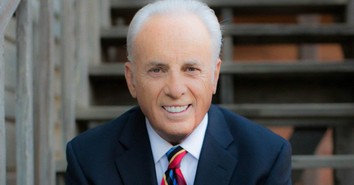A Mexican Culture Undaunted by U.S.

MEXICO CITY (AP) - U.S. influence is woven through Mexico's history. But with a 3,000-year-old culture, Mexico has proven surprisingly able to absorb the influx and turn it into something, well, Mexican.
The very shape of Mexico was determined by the 1847 U.S. invasion, which lopped off half of the country's territory.
Nowadays, ``The Simpsons,'' in a dubbed version, is one of the country's most popular shows. McDonald's is trying breakfast burritos in both countries.
The English-influenced Spanish of northern Mexicans often draws smirks from southern compatriots: Northerners call a truck a ``troca,'' and a junkyard a ``yonke.''
But even southern Mexicans use words like ``socket'', ``clutch'' and ``pants'' (for sweatpants).
Immigration is perhaps the strongest tie: The United States has been a haven for Mexico's saints and sinners since the two countries began to share a common border in the 19th century. Many leaders of the 1910 revolution plotted the uprising from El Paso, Texas.
In this decade, ``cholo'' styles inspired by U.S. Chicano youths - ``low-rider'' bicycles, hairnets, tattoos, earrings (for boys) or brightly dyed hair - have been carried deep into Mexico by migrants returning from the states.
In one town in the rural state of Michoacan, 700 miles south of the border, school authorities banned such showiness from classrooms in August, arguing it prompts disrespect and rebelliousness.
In the lush outback of the Gulf state of Veracruz, coffee farmers talk knowingly about where a migrant can get work in Farmingville on Long Island in New York, or in the Manhattan Chinese restaurants that depend on Mexican labor.
The price, routes and difficulties of an illegal trek across the border are part of local lore throughout rural Mexico.
``Today, you now can find only small islands, made up of 93 townships (out of 2,450) in the country, that do not have some kind of contact with the United States,'' Rodolfo Tuiran, general secretary of Mexico's National Population Council, said recently. ``These trends are worrisome.''
No matter how far one travels from the border - where Tex-Mex cuisine and music are hybrids of both cultures, and the property of neither - one sees U.S. influence.
In Indian communities in Mexico's southern mountains, where life looks more like 16th-century Europe than modern America, Pepsi, Coke, U.S.-style snacks and U.S. videos - often martial arts movies - are among the few readily available goods.
The influx of U.S. fashion, movies, television, and even political styles has accelerated since the signing of the North American Free Trade Agreement in 1994.
There has been relatively little backlash to the fact that you can buy a Swedish luxury car in U.S. dollars, shop at a Wal-Mart and go to a Six Flags amusement park in Mexico.
Still, U.S. influences that step on valued Mexican traditions can be a source of irritation. For example, graveside ``Day of the Dead'' celebrations are being overtaken by the trick-or-treat of Halloween.
And tourist resorts like Cancun - geared almost exclusively to U.S. travelers, with American chain restaurants posting ads and menus in English and prices in dollars - make Mexicans feel, as a popular joke goes, that ``soon we'll need a passport to travel to Cancun.''
Originally published September 04, 2001.







